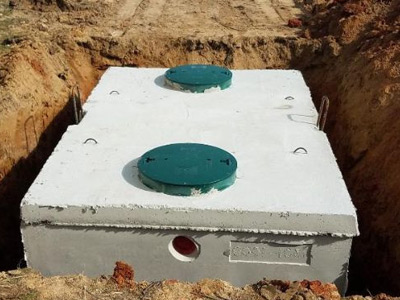- Home
- Blog
- Septic Tank Installations for New Properties: A Complete Guide
Septic Tank Installations for New Properties: A Complete Guide
 Building a new property involves numerous considerations, from architectural design to the selection of utilities. One of the most essential elements, particularly in rural or undeveloped areas, is ensuring the waste management system is properly planned and installed. For many new properties, a septic tank is the most practical solution for handling waste and wastewater.
Building a new property involves numerous considerations, from architectural design to the selection of utilities. One of the most essential elements, particularly in rural or undeveloped areas, is ensuring the waste management system is properly planned and installed. For many new properties, a septic tank is the most practical solution for handling waste and wastewater.
Septic tank installation involves thoroughly understanding the site's conditions, local regulations, and the most effective system design. Proper installation by professionals like Gibbs Excavating & Grading can ensure that a property's sewage system works efficiently for years, providing homeowners with a hassle-free experience.
Why Proper Installation Is Crucial
The importance of correct installation cannot be overstated. A well-installed system will work seamlessly for decades with minimal maintenance, while a poorly installed one may require frequent repairs or replacements, causing significant disruptions and unexpected expenses. Inadequate septic system installation can also lead to health hazards due to contamination of local water supplies, soil, and the surrounding environment. Getting the installation right is about convenience, protecting the property, and the community's health.
Ensuring the septic tank is placed in the correct location, at the right depth, and following local codes is essential. A professional installation can mitigate risks, ensuring the system works efficiently and lasts for years. A licensed expert can handle the planning, installation, and compliance requirements, reducing the likelihood of problems down the line.
Key Considerations for Septic Tank Installation
When it comes to installation, several factors must be assessed and addressed, which include:
- Site Evaluation and Soil Conditions - The soil condition plays a crucial role in the performance of a septic system. Before installation, a professional will assess the soil's ability to absorb and filter wastewater. This is done through a percolation test, which measures how quickly water is absorbed into the ground. If the soil is not ideal for wastewater filtration, alternative methods or systems may be required. The site evaluation will also consider the slope of the land and the distance from the property's water supply, ensuring the system is placed in an optimal location.
- Tank Size - Choosing the correct size of the septic tank is critical. It must be large enough to handle the volume of wastewater the residents produce. The tank's size depends on various factors, such as the number of bedrooms, bathrooms, and expected water usage. A tank that is too small will be unable to accommodate the household's wastewater load, leading to system overloads, backups, and early failure.
- Septic System Design - Different types of septic systems are designed for various soil and site conditions. The most common is the traditional gravity-fed system, but other systems may be more suitable for specific properties. For example, aerobic treatment units or sand filter systems may be needed if the soil conditions are poor or space is limited. A professional installer can help determine which system design best meets the property's needs and complies with local regulations.
- Permitting and Compliance – You need to obtain the proper permits before beginning the installation. Local and state regulations govern septic systems to ensure safe installation and correct function. A professional installer is familiar with these regulations and can handle all the necessary paperwork, ensuring the system is up to code and operates legally. Ignoring these regulations can result in fines or the need to redo the installation.
The Septic Tank Installation Process
Installing a septic tank is a multi-step process that must be carried out precisely and:
- The first step is excavating the site, where the tank and drain field will be placed.
- The tank is then lowered into the prepared site, and pipes are connected to direct wastewater from the home into the tank.
- Inside the tank, solids settle at the bottom, while liquids flow into a drain field, filtered back into the ground.
- After the tank is in place and connected, the system will be tested for leaks, proper functionality, and compliance with local regulations.
For information on our septic tank installations and other services, contact Gibbs Excavating & Grading via this Online Form or call us at 615-419-2457. We will get back to you shortly.

 Building a new property involves numerous considerations, from architectural design to the selection of utilities. One of the most essential elements, particularly in rural or undeveloped areas, is ensuring the waste management system is properly planned and installed. For many new properties, a septic tank is the most practical solution for handling waste and wastewater.
Building a new property involves numerous considerations, from architectural design to the selection of utilities. One of the most essential elements, particularly in rural or undeveloped areas, is ensuring the waste management system is properly planned and installed. For many new properties, a septic tank is the most practical solution for handling waste and wastewater.
